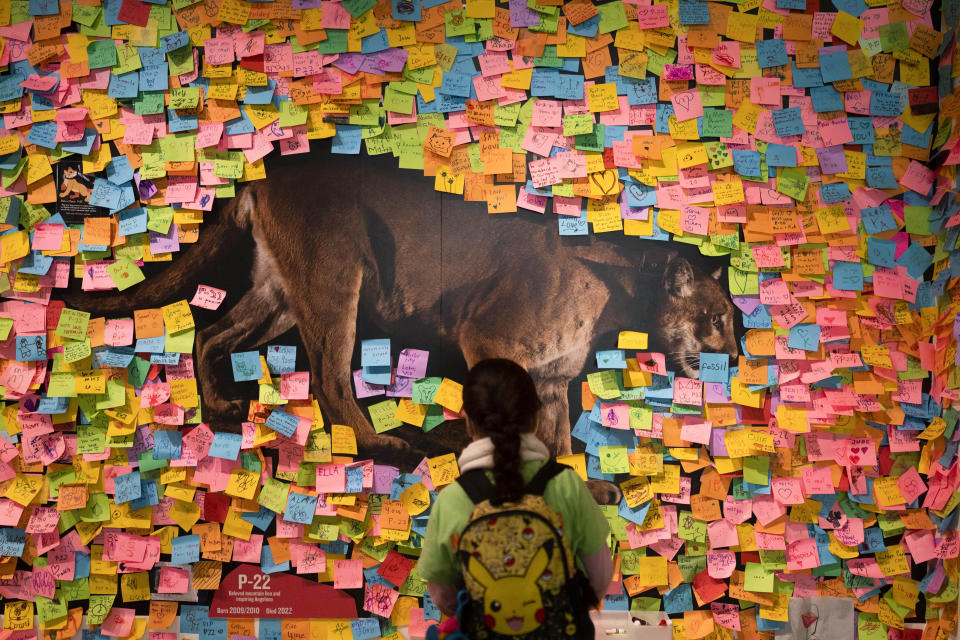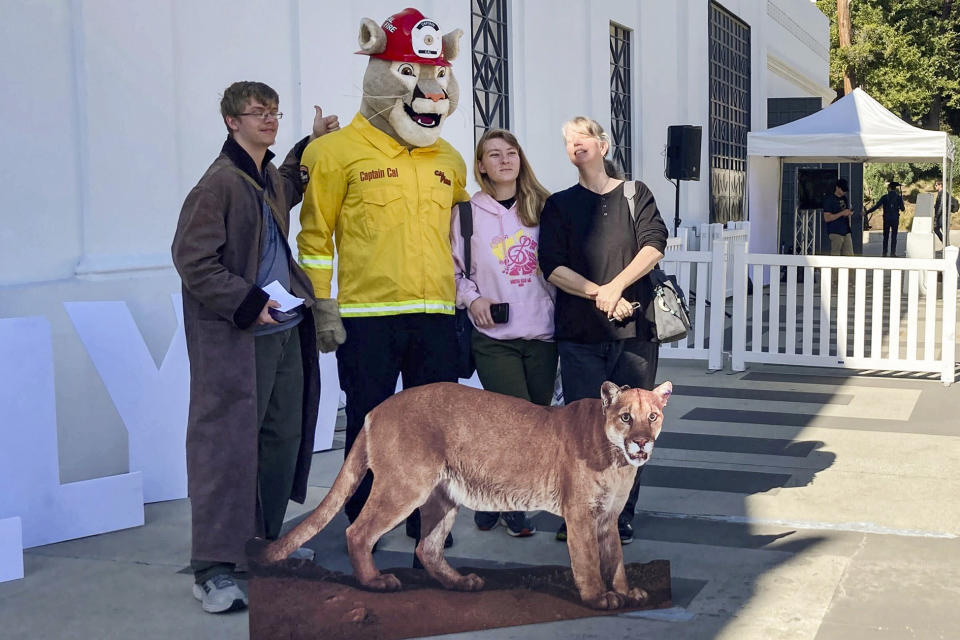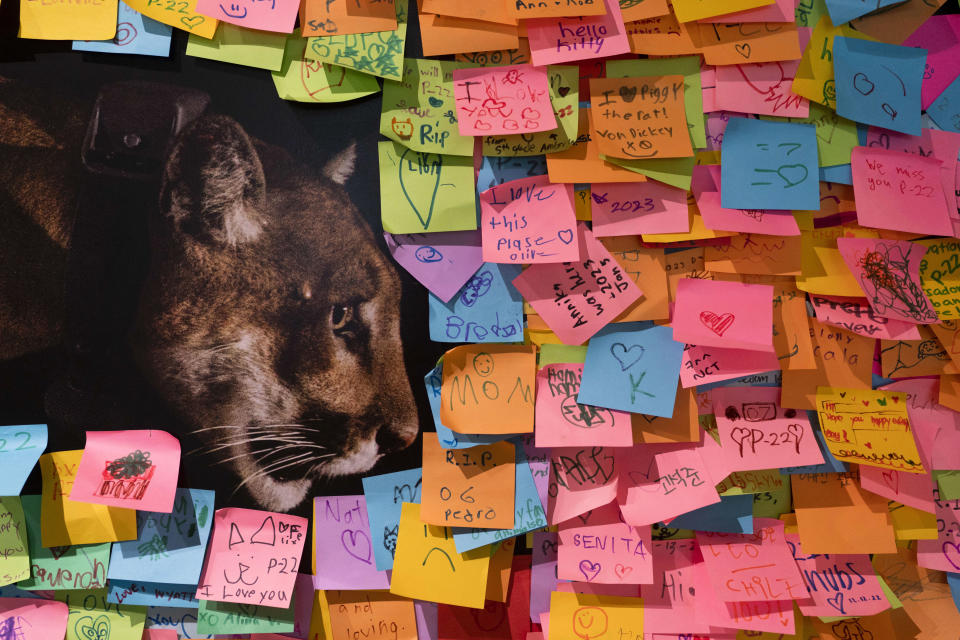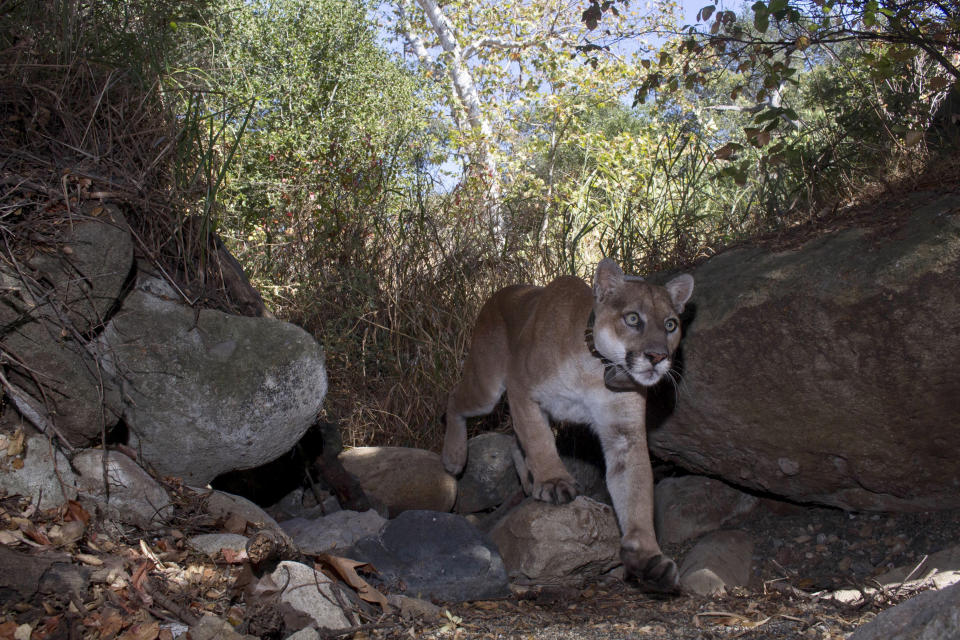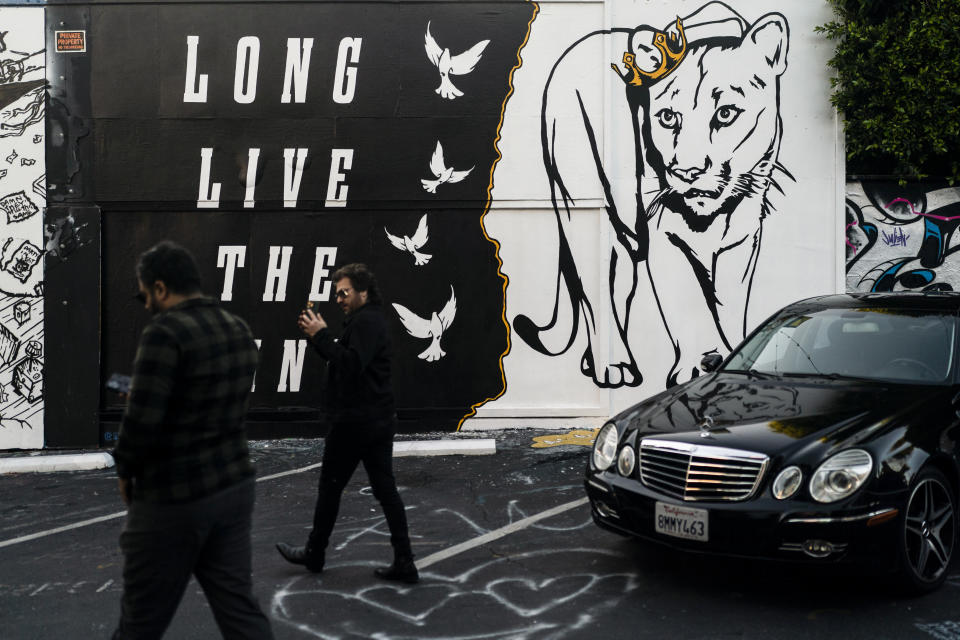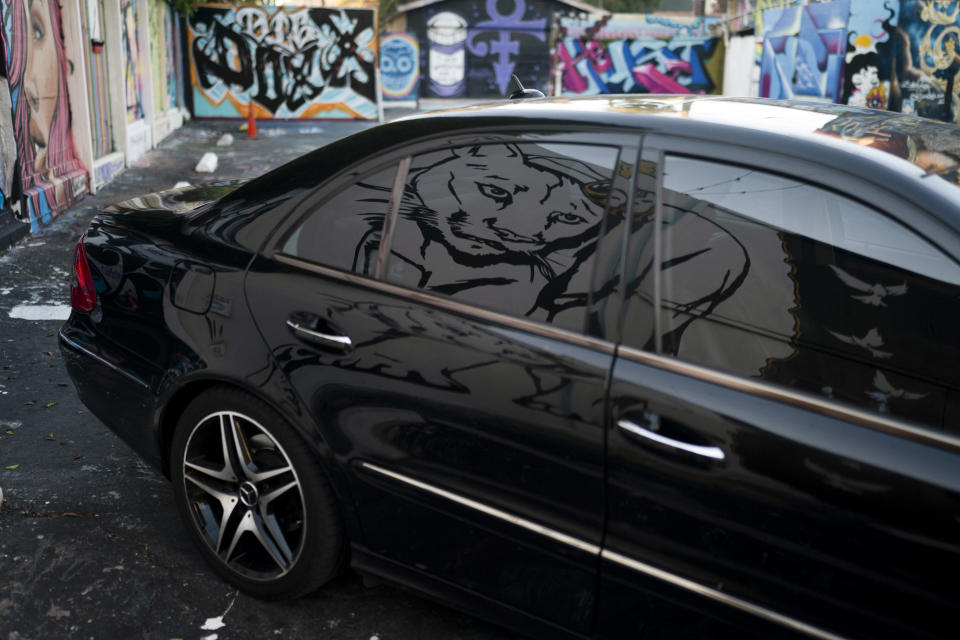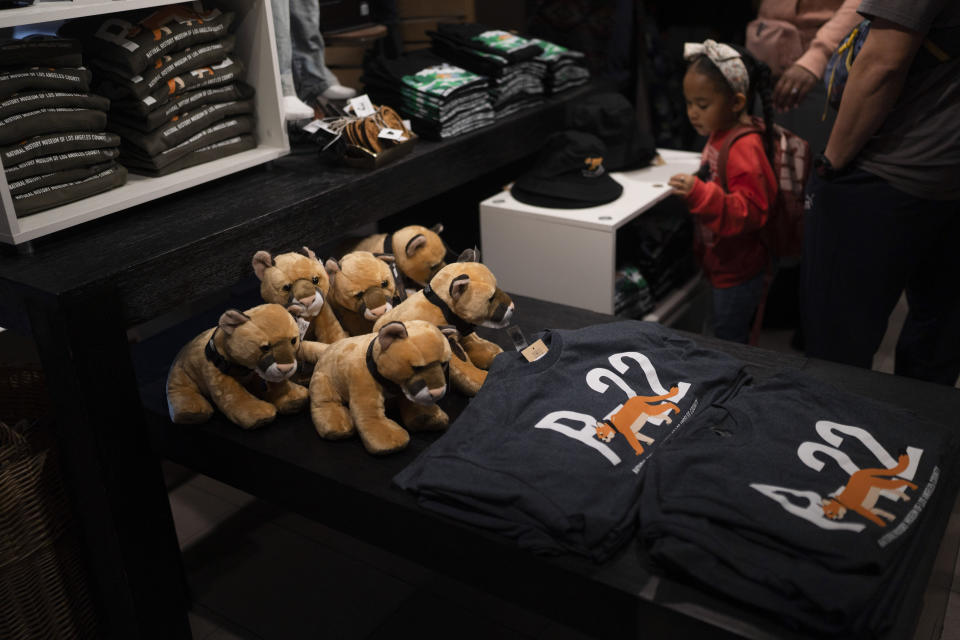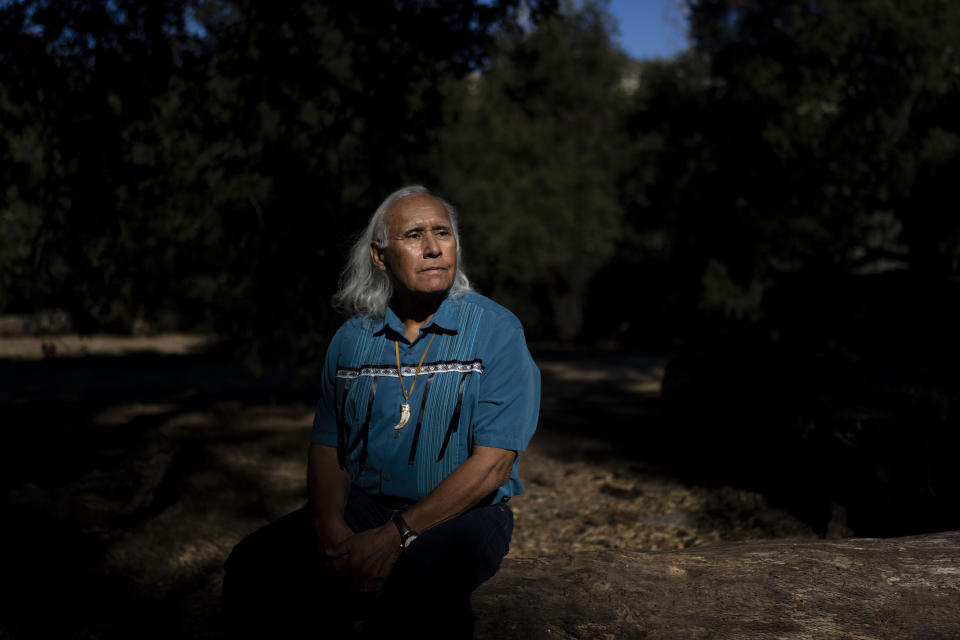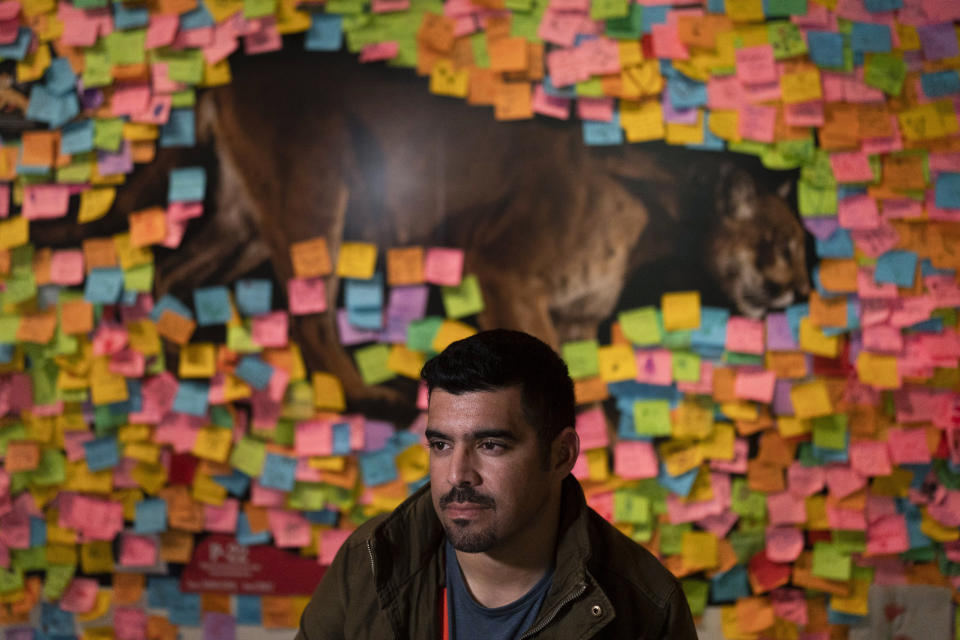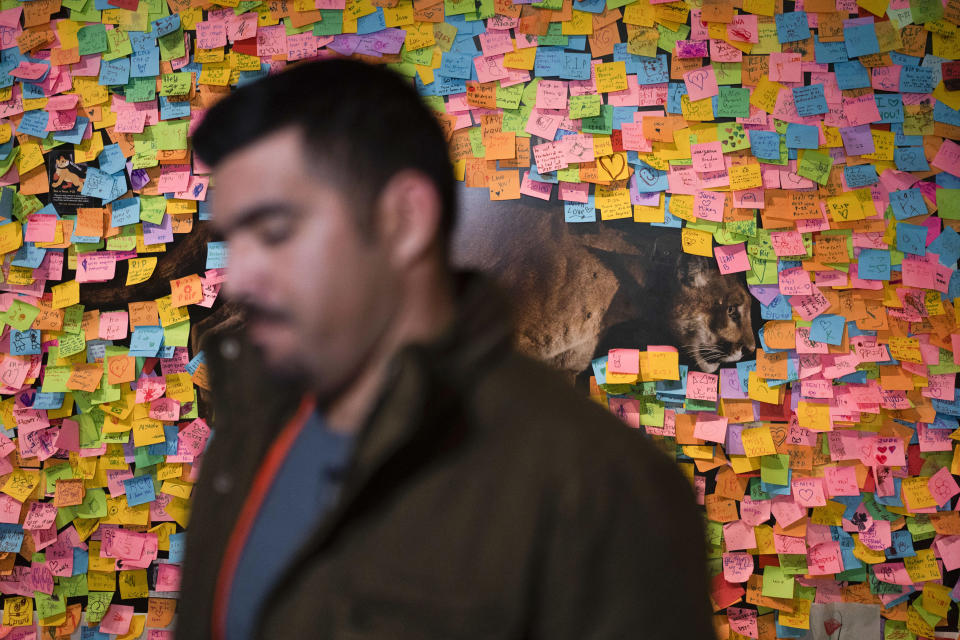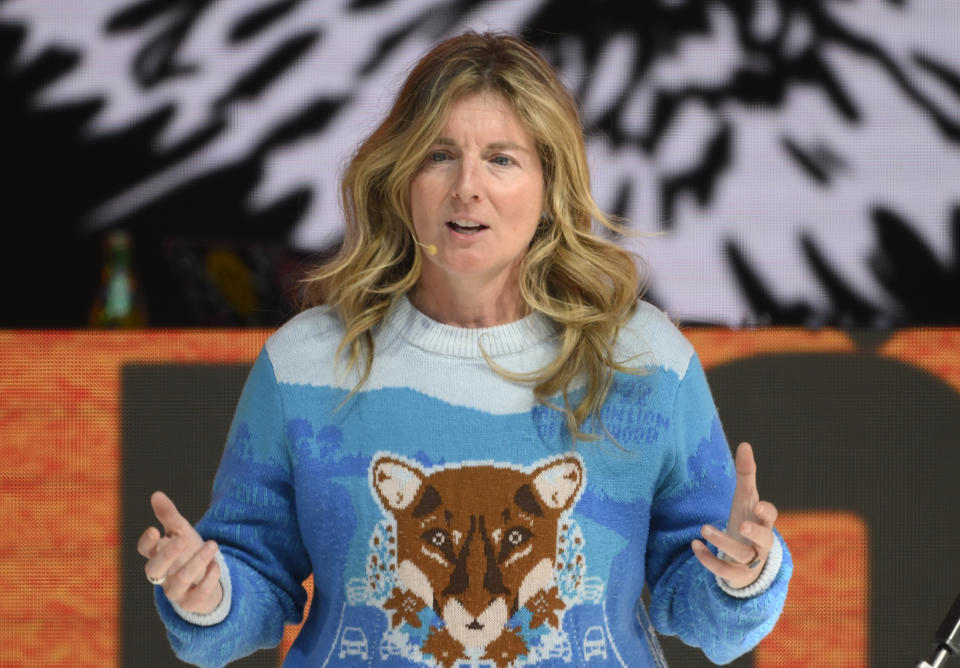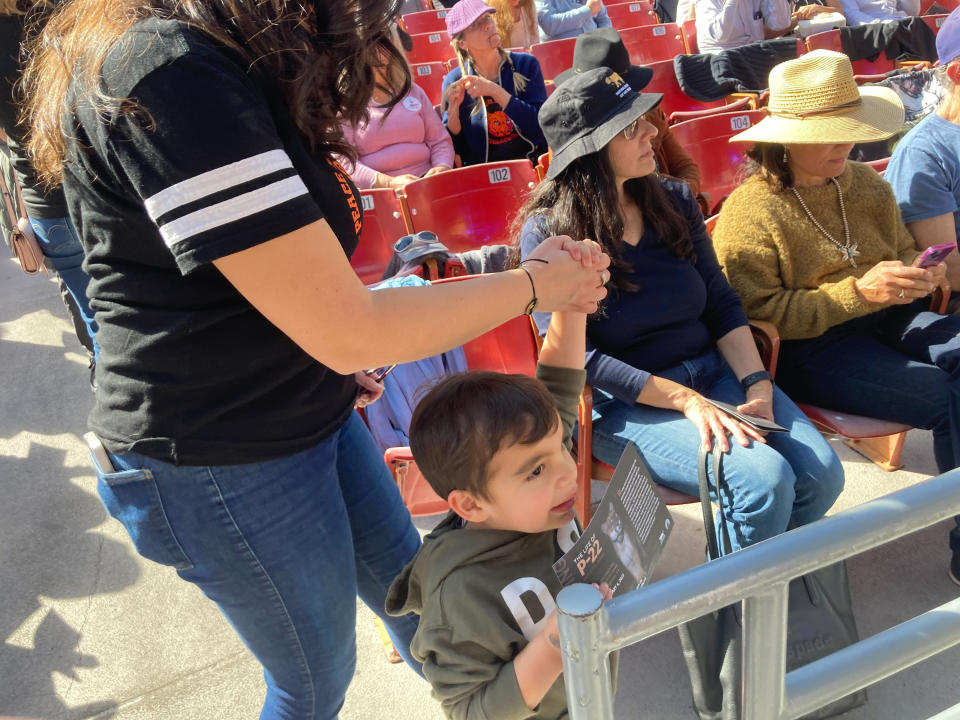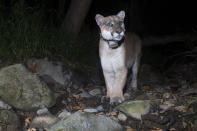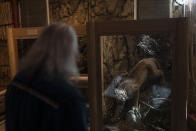Tribes, researchers debate final fate of P-22, famed LA puma
LOS ANGELES (AP) — The life of Los Angeles’ most famous mountain lion followed a path known only to the biggest of Hollywood stars: Discovered on-camera in 2012, the cougar adopted a stage name and enjoyed a decade of celebrity status before his tragic death late last year.
The popular puma gained fame as P-22 and cast a spotlight on the troubled population of California’s endangered mountain lions and their decreasing genetic diversity. Now, with his remains stored in a freezer at the Natural History Museum of Los Angeles County, wildlife officials and representatives from the region’s tribal communities are debating his next act.
Biologists and conservationists want to retain samples of P-22’s tissue, fur and whiskers for scientific testing to aid in future wildlife research. But some representatives of the Chumash, Tataviam and Gabrielino (Tongva) peoples say his body should be returned, untouched, to the ancestral lands where he spent his life so he can be honored with a traditional burial.
In tribal communities here, mountain lions are regarded as relatives and considered teachers. P-22 is seen as an extraordinary animal, according to Alan Salazar, a tribal member of the Fernandeño Tataviam Band of Mission Indians and a descendent of the Chumash tribe who said his death should be honored appropriately.
“We want to bury him like he’s a ‘wot,’ like a ‘tomier,’ " Salazar said, "which are two of the words for chief or leader" in the Chumash and Tataviam languages, respectively. "Because that’s what he was.”
Likely born about 12 years ago in the western Santa Monica Mountains, wildlife officials believe the aggression of P-22's father and his own struggle to find a mate amid a dwindling population drove the cougar to cross two heavily traveled freeways and migrate east.
He made his debut in 2012, captured on a trail camera by biologist Miguel Ordeñana in Griffith Park, home of the Hollywood sign and part of ancestral Gabrielino (Tongva) land.
Promptly tagged and christened P-22 — as the 22nd puma in a National Park Service study — he spawned a decade of devotion among Californians, who saw themselves mirrored in his bachelor status, his harrowing journey to the heart of Los Angeles and his prime real estate in Griffith Park amid the city's urban sprawl. Los Angeles and Mumbai are the world’s only major cities where large cats have been a regular presence for years — mountain lions in one, leopards in the other — though pumas began roaming the streets of Santiago, Chile, during pandemic lockdowns.
Angelenos celebrated his life on Saturday at the Greek Theater in Griffith Park in a star-studded memorial that featured musical performances, tribal blessings, speeches about the importance of P-22's life and wildlife conservation, and a video message from Gov. Gavin Newsom.
Proceeds from merchandise sales of P-22 T-shirts, toys and prints went to the “Save the LA Cougars” campaign. The group was inspired by P-22 to advocate for a wildlife crossing over a Los Angeles-area freeway that will allow big cats and other animals safe passage between the mountains and wildlands to the north. The bridge broke ground in April.
P-22′s star dimmed last November, when he killed a Chihuahua on a dogwalker’s leash i n the Hollywood Hills and likely attacked another weeks later. Wildlife officials said the puma seemed to be “exhibiting signs of distress,” in part due to aging.
They captured P-22 on Dec. 12 in a residential backyard in the trendy Los Feliz neighborhood. Examinations revealed a skull fracture — the result of being hit by a car — and chronic illnesses including a skin infection and diseases of the kidneys and liver.
The city's cherished big cat was euthanized five days later.
Los Angeles mourned P-22 as one of its own, with songs, stories and murals crying “long live the king." Post-It notes of remembrance blanketed an exhibit wall at the Natural History Museum and children's paw print messages covered a tableau outside the LA Zoo.
While fame is fleeting for most celebrities, P-22's legacy lives on — though in what form is now up for debate.
The Natural History Museum took possession of the animal's remains, prompting swift condemnation by tribal leaders who feared P-22′s body could be taxidermized and put on display. Samples taken during the animal's necropsy also are causing concerns among the tribal communities about burying the cougar intact.
“In order to continue on your journey into the afterlife, you have to be whole,” said Desireé Martinez, an archaeologist and member of the Gabrielino (Tongva) community.
A year before P-22's death, Ordeñana — the wildlife biologist whose camera first spotted the cougar and is now a senior manager of community science at the Natural History Museum — had applied for a permit from the state for the museum to receive the mountain lion's remains when he died. Typically an animal carcass would be discarded.
Ordeñana and the state Department of Fish and Wildlife have apologized, saying they should have spoken with the tribes from the start.
Museum, state and other officials began talks with the tribes Monday in the hopes of reaching a compromise. Ordeñana and other scientists are advocating to retain at least some of P-22's tissue samples to preserve future research opportunities for the endangered animals as new technologies and techniques arise.
“We’re trying to see what can we do differently — regarding outreach, regarding our process — that is feasible for us as an institution," Ordeñana said, "but respectful of both the scientific and the cultural-historic legacy of these animals.”
Salazar and Martinez, however, do not believe samples should be taken from the animal's remains and held by the museum in perpetuity.
“We’ve been studied like the mountain lion has been studied," Salazar said. “Those bones of my tribal ancestors are in boxes so they can be studied by future generations. We’re not a science project.”
Beth Pratt, the California executive director for the National Wildlife Federation who emceed Saturday's memorial and a key player in developing the wildlife crossing, said it's important to balance the different arguments to ensure the diminishing LA cougar population has a future.
“We do need data from these animals, even P-22, for science," said Pratt, who calls him “the Brad Pitt” of pumas.
Chuck Bonham, director of the state Department of Fish and Wildlife, said the P-22 discussions have forced his agency and others to reckon with their outreach to California's tribes.
“I think he'll live forever in this way," Bonham said.
Martinez, of the Gabrielino (Tongva) community, said the beloved mountain lion's death also symbolizes how humans must take responsibility for respecting animals' lives.
“We are wildlife. We are creatures of nature, just as all the animals and plants are," Martinez said. "What can we do to make sure that the creatures that we are sharing this nature with have the ability to survive and live on — just like us?”

 Yahoo News
Yahoo News 